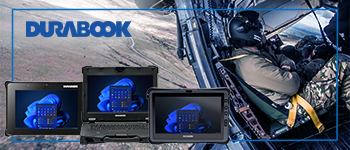Facing the future
Timothy Compston considers where facial recognition is heading.
When it comes to biometrics for security there is little doubt that facial recognition is now at the forefront of ‘frictionless’ ways to authenticate the identity of individuals or to identify potential security threats. The speed of change here is breath-taking with a new report from The Carnegie Endowment for International Peace pointing out that at least 75 countries around the world are actively using AI tools like facial biometrics.
Putting specific figures on the dramatic upswing in the value of the global market for facial recognition, the research firm MarketsandMarkets is now forecasting a more than two-fold increase in value from $3.2-billion in 2019 to $7-billion by 2024 at a compound annual growth rate of 16.6 percent. MarketandMarkets points to the growing surveillance market, rising government and defence deployments and technological advances across various industry sectors as the key drivers for growth here. Recent analysis released by Adroit Market Research is even more bullish, predicting that the worldwide facial recognition market will exceed $12-billion by 2025. Where Adroit agrees with MarketsandMarkets is in the prediction that 3D facial recognition will have the largest slice of the market by the end of each forecast period. When touching on why 3D has the edge over 2D, MarketsandMarkets attributes this to the fact that this technique makes use of facial contours to identify and analyse various unique features in a human face. In addition, MarketsandMarkets notes the ease in detection of facial data from videos and 2D images and the way that 3D is least affected by illumination issues.
Not surprisingly, there has been some push back in the UK, US and Europe by privacy campaigners with regards to facial recognition and some manufacturers of camera equipment have also been clarifying their positions on its roll-out. Interestingly the first report from the AI and Policing Technology Ethics Board set up by Axon – the body worn camera vendor – said that: “Face recognition technology is not currently reliable enough to ethically justify its use on body worn cameras. At the least, face recognition technology should not be deployed until the technology performs with far greater accuracy and performs equally well across races, ethnicities, genders and other identity groups.” Beyond this some US cities – like San Francisco – have said they will not allow facial recognition on their streets and at one point the European Commission was even considering a ban on the use of facial recognition in public areas for up to five years, although this threat now seems to have receded.
Despite some reservations, as we head into a new decade we are seeing the latest generation of powerful facial recognition solutions being brought to market that offer higher speeds and a greater degree of accuracy than ever before, thanks to advances in computing power – AI and, specifically, a deep learning architecture – plus the move from 2D to 3D to cope with a wider range of viewing angles and lighting conditions. Crucially, this facial recognition revolution is helping to unlock a growing footprint of applications, whether it be to ramp up security for mobile banking; secure smartphones; control access at key facilities or, when combined with video surveillance footage, tackle crime in our smarter, safer cities. Perhaps a sign of things to come for facial recognition is the news that researchers in China have developed a 500-megapixel cloud camera that can collect detailed facial data of thousands of people in a crowd simultaneously and specific targets to be identified when integrated with AI and cloud computing technology for facial recognition.
Drilling down to specific applications, it is interesting to reflect on the announcement by Dubai Police that, under a new Artificial Intelligence (AI) network, thousands of video surveillance cameras from Dubai Government agencies are now going to provide a live feed to one central command centre. The Oyoon (eyes) initiative applies AI and facial recognition technologies to help spot crimes and incidents by analysing live video with no human intervention and enables the police to track criminals across the city by uploading their images into a database. Implemented over the past two years, the initiative is part of the Dubai 2021 Vision of a smart city and preparations for Expo 2020. The value of video surveillance cameras fitted with facial recognition technology and also vehicle licence plate readers in a city environment was underlined at the end of 2018 when it was reported that these type of cameras had helped Al Muraqqabat police station in Dubai to arrest 100 wanted people and 441 suspects that year.
Other police forces are keen to investigate the utility of facial recognition with London’s Metropolitan Police Service confirming recently that it is to begin the operational use of Live Facial Recognition (LFR) technology from NEC. This, it points out, will be ‘intelligence led’ and deployed to specific locations in London to tackle serious crime like those involving guns and knives. There is also growing interest in investigating the practicalities of facial recognition to ramp up security for large-scale gatherings and last February software was piloted over two days during Carnival in Nice, France, a city which was the victim of a devastating terrorist attack back in 2016. For sporting events, Danish Superliga Football Club Brøndby IF, for example, has enhanced fan safety by using Panasonic’s FacePRO facial recognition system (see Intersec March 2020) to prevent banned football hooligans from entering the stadium, while maintaining visitor privacy and complying with European Union General Data Protection Regulations.
An important development for facial recognition in recent times has been the advent of deep learning. With modern deep learning techniques, facial recognition engines such as SmartVis from Digital Barriers – that develops edge-intelligent solutions for the surveillance and security market – can identify users in most lighting conditions, even when they are not looking directly at the camera. As well as this, the company says that off-the-shelf cameras can be used, dramatically lowering the cost. The ability of solutions like these to leverage existing video surveillance cameras – and not have to rely on bespoke hardware or special calibration – opens up the potential, says the company, for facial recognition to be deployed on a much greater scale than before around areas like critical infrastructure and crowded places.
Another example of the additional intelligence and computer processing power now being applied to this form of biometrics for border control, access control and time and attendance comes in the shape of facial recognition innovator Aurora. The vendor has a proven track record when it comes to state-of-the-art biometrics having cut its teeth in applications like London Heathrow’s Terminals 2 and 5 for airport passenger management. Specialising in identity verification for over a decade now, Aurora has moved from visible light systems through to pioneering the use of near infrared sensor technology to overcome the problems of varying ambient light conditions on a scene.
The application of deep learning-based artificial intelligence has proved to be a real game changer for Aurora’s solutions. The key factor about deep learning in this field, according to Aurora is not just the scale of the performance enhancement but the speed at which it can be achieved. According to the vendor, the Neural Network it has developed to recognise faces has cut down the development time required to make significant performance gains from months to weeks.
With regards to banking, last September, Aion Digital, one of the fastest growing FinTech solution providers in the GCC, announced a partnership with Daon – a global leader in biometric identity technology – to introduce the IdentityX two-in-one platform for digital customer on-boarding. Rewinding to 2016 and Gulf Bank Kuwait asked Daon to provide biometric authentication within its mobile banking application via Daon’s Identity Platform. By working with Daon the bank’s customers were then able to login with biometrics using their fingerprint touch ID and ‘Blinking to Bank’ facial recognition, from anywhere in the world, to perform a wide array of banking transactions efficiently and securely.
In another step aimed at making ride-hailing a safe and secure experience for its users, in April 2017 we witnessed Dubai-based Careem, the Middle East’s leading ride-hailing app, announce the integration of facial recognition technology into its technological framework. Powered by Digital Barriers, the back-end biometric identification system enables Careem to confirm its ‘Captains’ identity in real-time, eliminating all of the risks associated with fraudulent car ownership and possession.
Dubai International Airport (DXB) too has been leading the way for facial recognition with Princeton Identity’s multi-modal biometric technology being deployed in the Emirates Airlines Terminals. This is in the form of its Access500e identity management kiosk module, a fast face and iris biometric capture device. Here in the UK, last September Gatwick Airport became the country’s first to confirm that it would use facial recognition cameras on a permanent basis for ID checks before passengers can board planes.
Returning to the debate over the relative value of 2D or 3D facial recognition, advocates of 3D say that unlocking a third dimension in facial recognition means these solutions should be better able to cope with a range of viewing angles and even changes to people’s appearance, from facial hair to sunglasses. A case in point is the approach taken by Artec ID – the 3D biometric division of Artec Group – and its Broadway 3D system, which provides a very accurate mesh (structured light pattern) to make high-speed recognition possible, against templates stored in a database, in less than a second. Developed for recognition on the move, according to Artec, the Broadway 3D system’s ability to read information about face shape has been optimised for high throughput facilities like office buildings, factories and transport hubs where being non-contact makes it a ‘very friendly’ process.
Back on the streets, in the view of Dr Rustom Kanga, ceo at iOmniscient – a specialist in video content analysis – the true value of recognising faces in crowded urban areas is rarely achieved through deploying the technology on its own: “The value comes from being able to implement complex use cases with little effort. For instance, assume someone abandoned a bag in a crowded location. First, one has to detect the bag, then one has to know who left it there and to enrol them in the database. After that, this person needs to be tracked (across a city if necessary). Finally, when they are located the system needs to find the nearest police officer and tell them where to go, who to catch and why.” In the end, Kanga believes that the ability to achieve such steps automatically underlines the fact that the recognition of faces is at its most powerful when it is employed alongside other technologies. In the end despite privacy concerns by some, the future for facial recognition is a bright one whether that be to make airports safer or to help secure our cities from criminal and terrorist elements.
Timothy Compston is a journalist and PR professional who specialises in security and defence issues. He studied International Relations and Strategic Studies at Lancaster University, is PR Director at Compston PR and a previous Chairman of both the National PR Committee and CCTV Section PR Committee of the British Security Industry Association (BSIA).









